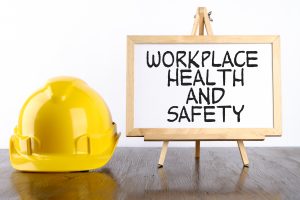 Working Minds campaign will now target HGV drivers and their bosses to promote good mental health whilst at work. The Road Haulage Association (RHA) on Thursday 10 August joins as a campaign partner.
Working Minds campaign will now target HGV drivers and their bosses to promote good mental health whilst at work. The Road Haulage Association (RHA) on Thursday 10 August joins as a campaign partner.
Health and Safety Executive (HSE) view is that more needs to be done to protect Britain’s truckers from work-related stress.
Long hours away from home, demanding delivery times and limited access to toilets and showers are common causes of stress for drivers.
As part of the campaign, when safe to do so, drivers can text “BeAMate” for free confidential health support 24/7 – a service provided by Working Minds campaign partner, Mates in Mind.
Material and advice from the Working Minds campaign for drivers and employers can be found here.
Mental health charity Mind revealed 30 per cent of work-related illness in the transport and logistics sector is due to stress, depression, and anxiety. One in four HGV drivers will experience mental health issues at some point throughout the year.*
Talking about mental health can be a struggle for many people, especially men, who make up 80 per cent of our industry’s workforce. Due to the stigma surrounding mental health, 95 per cent of workers calling in sick due to stress give a different reason to their manager. Mind also reports that 22 per cent of workers have been diagnosed with a mental health problem, but less than half have told their manager.*
Elizabeth Goodwill, from the HSE’s Stress and Mental Health Policy Team said: “HGV drivers keep the country and our economy moving. It’s therefore vital employers meet their legal duty to ensure risks of stress and mental ill health are factored into risk assessments.
“Initiatives such as ‘BeAMate’ are helpful for people needing individual help, but we would like to see more focus on preventing work-related stress at an organisational level, to stop it developing into poor mental health. We look forward to working with the Road Haulage Association and Mates in Mind to provide employers with the help they need to protect and support drivers.
Michelle Upson, a lorry driver who has been in the industry for more than three decades said: “I’d say there is a mental health problem in the industry. Especially for the guys up the road all week and without their families – it is a lot tougher for them.
“Most of the workforce is men and the age demographic is still high. I think they are less likely to talk about their mental health problems so promoting it is a good thing.”
HSE and the Working Minds campaign warns that the scale of work-related stress across the economy has increased in recent years. Stress, depression or anxiety is now the number one cause of work-related ill-health in Great Britain.
Within the transportation and storage sector as a whole (which includes road haulage), around four in ten cases of work-related ill-health are due to stress, depression or anxiety.
Text “BeAMate”: If you or someone you know needs help or support, you can use our “BeAMate” text support service. To use the service, simply text “BeAMate” to 85258 and trained volunteers can help with issues including anxiety, stress, loneliness or depression and are available 24/7.
Contact us for further advice.
 The importance of health and safety in the workplace can never be underestimated. As well as being written into law, ensuring staff aren’t at risk of injury or illness is also an integral part of being a responsible employer.
The importance of health and safety in the workplace can never be underestimated. As well as being written into law, ensuring staff aren’t at risk of injury or illness is also an integral part of being a responsible employer.
Maybe one of the biggest drivers for employers to take workplace health and safety seriously is that it allows you to show your customers and employees that you are committed to a safer workplace. This is one of the many reasons why organisations invest in ISO 45001 certification, the internationally recognised Occupational Health and Safety (OH&S) Management System Standard, which sets out the requirements for an organisation to ensure a safe and healthy workplace and to prevent work-related accidents and illnesses.
ISO 45001 is a framework that helps businesses to raise the awareness of health and safety risks among their employees as well as create controls that help them to mitigate or remove these risks from the workplace. By doing so, employers can help to keep their staff happy, healthy and safe, reducing the likelihood of absenteeism, injury, mental ill health and breaches of legislation. Not only can this reduce staff turnover, but it can raise your business’ reputation in the marketplace and benefit your bottom line.”
ISO 45001 certification is a fantastic way of presenting your organisation’s commitment to providing a workplace in which the risk of illness and injury to your workers, community or clients is minimised.
Achieving this accreditation in order to make your organisation a safer place to work is also a fantastic way to boost productivity by reducing the number of disruptive incidents. It can also help to boost your workforce’s morale.
The benefits in seven key points:
The certification can be achieved by businesses of any size and it is suitable for all organisations that are looking to improve risk management, protect their reputation and drive productivity at work.
“A robust framework of health and safety processes has meant that businesses with ISO 45001 have had the procedures in place to quickly assess the new risk and its implications for the health and safety of their staff, as well as the means to communicate these risks and what the business planned to do to control them”
How can I gain ISO 45001 certification? What are the requirements?
Gaining ISO 45001 certification is a straightforward process, but it does require you to have some things in place before you start. You also need to be willing to change certain processes if required to gain certification.
For example, you need to determine the internal and external factors that affect your business, communicate roles and responsibilities clearly and adapt/react to changes. Other key actions include:
The most straightforward way to gain ISO certification is through the use of an experienced external party that can assist you in creating, implementing and certifying your ISO 45001 management system. This will help to ensure your organisation has adopted the right processes from the beginning in order to achieve certification quickly.
Contact us for further information.
 Everyone who works for a company needs to know how to work safely and without risks to health. The Health and Safety at Work Act 1974 requires you to provide whatever information, instruction, training and supervision as is necessary to ensure, so far as is reasonably practicable, the health and safety at work of your employees.
Everyone who works for a company needs to know how to work safely and without risks to health. The Health and Safety at Work Act 1974 requires you to provide whatever information, instruction, training and supervision as is necessary to ensure, so far as is reasonably practicable, the health and safety at work of your employees.
This is expanded by the Management of Health and Safety at Work Regulations 1999, which identify situations where health and safety training is particularly important, e.g. when people start work, on exposure to new or increased risks and where existing skills may have become rusty or need updating.
Training is essential to the achievements of a business. Perhaps its most positive benefit is better employees. A company develop the potential of an employee, and part of the way a company encourages improvement is through training. Often, good training is just as important as a good benefits package for an employee. Health and safety training is essential in order to stay compliant with current regulations. Training must be provided during working hours and not at the expense of your employees. Special arrangements need to be made for part timers or shift workers.
We can train your employees with mandatory health and safety training as well as additional training to suit your industry. We have teamed up with local companies who can provide in-house training and a company called iHasco who provide online training, they can assist you by providing a package to suit your employee needs and your pocket!
Online training offers clients the benefit of training without losing staff for hours at a time. The courses are easy to complete online and a certificate is downloaded for records. The benefit of this is that everyone can be taught without it interfering with the business.
IHASCO have a library of courses on offer including health and safety, HR Compliance, Management, Business Compliance and in various sectors. Click the link to their website. IHASCO.
To learn more about making your training simple, speak to Amiiee Park at iHasco and quote ‘WHSS’.
Email: amiiee.park@ihasco.co.uk
Telephone: 01344 947409 EXT. [538] W.
If you would like us to contact the company on your behalf or would like alternative training requirements, please let us know.
Join our blog page – Click here.
Contact us.
 Electric vehicles are becoming increasingly popular and so ensuring their safety is paramount. This article explores how to manage the key hazards and risks for the safe operation of electric vehicles.
Electric vehicles are becoming increasingly popular and so ensuring their safety is paramount. This article explores how to manage the key hazards and risks for the safe operation of electric vehicles.
Current UK Government policy is to end the sale of new petrol and diesel vehicles by 2030 and for all new cars and vans to be fully zero emission at the tailpipe by 2035.
As a result, vehicle manufacturers are now focusing on alternative means of power, most notably electric as they phase out the manufacture and sale of petrol and diesel engine vehicles.
Latest figures from the RAC suggest that there are 712,000 “Battery Electric Vehicles” registered in the UK along with over 200,000 plug-in hybrids.
As this figure increases annually, organisations transitioning to an electric vehicle fleet will need to consider the potential hazards and risks associated with electric vehicles.
Currently, there are three types of vehicles.
Battery electric vehicles use a large capacity battery and electric motor/s to drive the vehicle. The battery needs to be charged from the electricity supply network when the vehicle is not in use.
Hybrid vehicles typically use two sources of power (internal combustion engine and battery) automatically with the vehicle braking systems used to charge the battery. This differs from a plug-in hybrid vehicle that can have its battery charged directly from the electrical supply network.
According to the Health and Safety Executive (HSE), “voltages present in electric and hybrid vehicles are significantly higher (currently up to 650 Volts direct current (dc)) than those used in other vehicles (12/24 Volts dc)” and that “in dry conditions, accidental contact with parts that are live at voltages above 110 Volts dc can be fatal”.
Battery systems may contain chemicals that can be harmful if released. They also store significant amounts of energy that can give rise to explosion if not dealt with correctly.
Based upon the above, the HSE have produced a list of hazards associated with these types of vehicles. This includes the following.
Other hazards identified include:
Although data is limited, there is some evidence to suggest that fires involving electric vehicles are increasing.
With an increase in vehicles this is likely to be the case but certainly there has been some notable warnings issued by UK fire and rescue services in recent times, particularly in relation to electric bicycles and scooters using lithium-ion batteries.
Of the data available, it does suggest that “thermal runaway” associated with vehicle batteries is causing rapid fire spread and total loss of the vehicle involved in the fire.
As a result, transport providers for example are banning users from taking their e-scooters onto trains.
The powerful voltages required to charge battery electric vehicles must be carefully managed. Factors to consider include:
Organisations will need to consider where charging points are to be installed. If at the workplace, then all relevant general health and safety and fire safety regulations will need to be adhered to.
There may be circumstances where employees may be required to charge vehicles at home. Although there is limited guidance on this situation, organisations should as part of the risk assessment process be determining if this can be undertaken safely, following best practice.
In terms of best practice, the Institution of Engineering and Technology (IET) have published Code of Practice for Electric Vehicle Charging Equipment Installation, 4th Edition.
This publication provides a clear overview of charging equipment, as well as setting out the considerations needed prior to installations and the necessary physical and electrical installation requirements.
It also details what needs to be considered when installing electric vehicle charging equipment in various different locations — such as domestic dwellings, on-street locations, and commercial and industrial premises.
The fire risk assessment for the workplace should also be reviewed to determine whether any additional general fire precautions may be required when installing charging facilities. Factors to consider may include:
Any installation should be undertaken by a competent organisation. The Office for Zero Emission Vehicles contains a list of authorised installers. These installers should follow best practice as provided by the IET and also found BS EN 61851-1: Electric Vehicle Conductive Charging System-General Requirements.
Clearly all employees required to charge electric vehicles must be provided with the relevant information, instruction and training. The primary source of information will be any guidance provided by both the vehicle manufacturer and charging equipment manufacturer.
It may also be advisable to extend training to include what action to take in the event of a malfunction including fire and faults with either vehicles or charging equipment.
As with any equipment installed in the workplace, the charging equipment must be subject to regular and appropriate inspection and maintenance. Again, the primary source of information to inform this regime will be from the manufacturer/s.
Employers may face situations where employees wish to store and charge e-scooters/e-bikes at the workplace (when using them to commute to and from work for example).
This should be subject to a risk assessment/fire risk assessment to determine the risks involved.
The National Fire Chiefs Council has produced generic guidance on charging including using approved charging devices and avoiding storage in escape routes. Further details can be found from the link below.
Electric vehicles can have different characteristics to combustion engine vehicles. As such all drivers should be given familiarisation training to include:
There may be circumstances where electric vehicles have to be worked on. The HSE have identified four categories as follows.
The HSE website notes that “additional skills and training will be necessary to allow people to work safely with E&HVs. The levels of competency required will vary greatly and are dependent on the type of work that people are expected to do”.
A suitable and sufficient risk assessment should be undertaken if any of the above activities are to be carried out by employees. Organisations such as the Institute of Motoring Industry have various courses to ensure competency of employees.
The HSE website also provides basic safety information in relation to the four categories noted above.
For example, it states that when undertaking maintenance (that excludes the high voltage systems), employees should:
Electric vehicles are becoming the norm. As such, where an organisation is to utilise such vehicles, it is important that the hazards and risks associated with the use of such vehicles are known and appropriately managed.
As electric vehicles are a relatively new technology, it may be the case that the hazards involved with their use may change and increase.
It is advisable when introducing electric vehicles and associated charging points that their use and maintenance are kept under review.
Contact us for further information.
(Correct at time of posting)